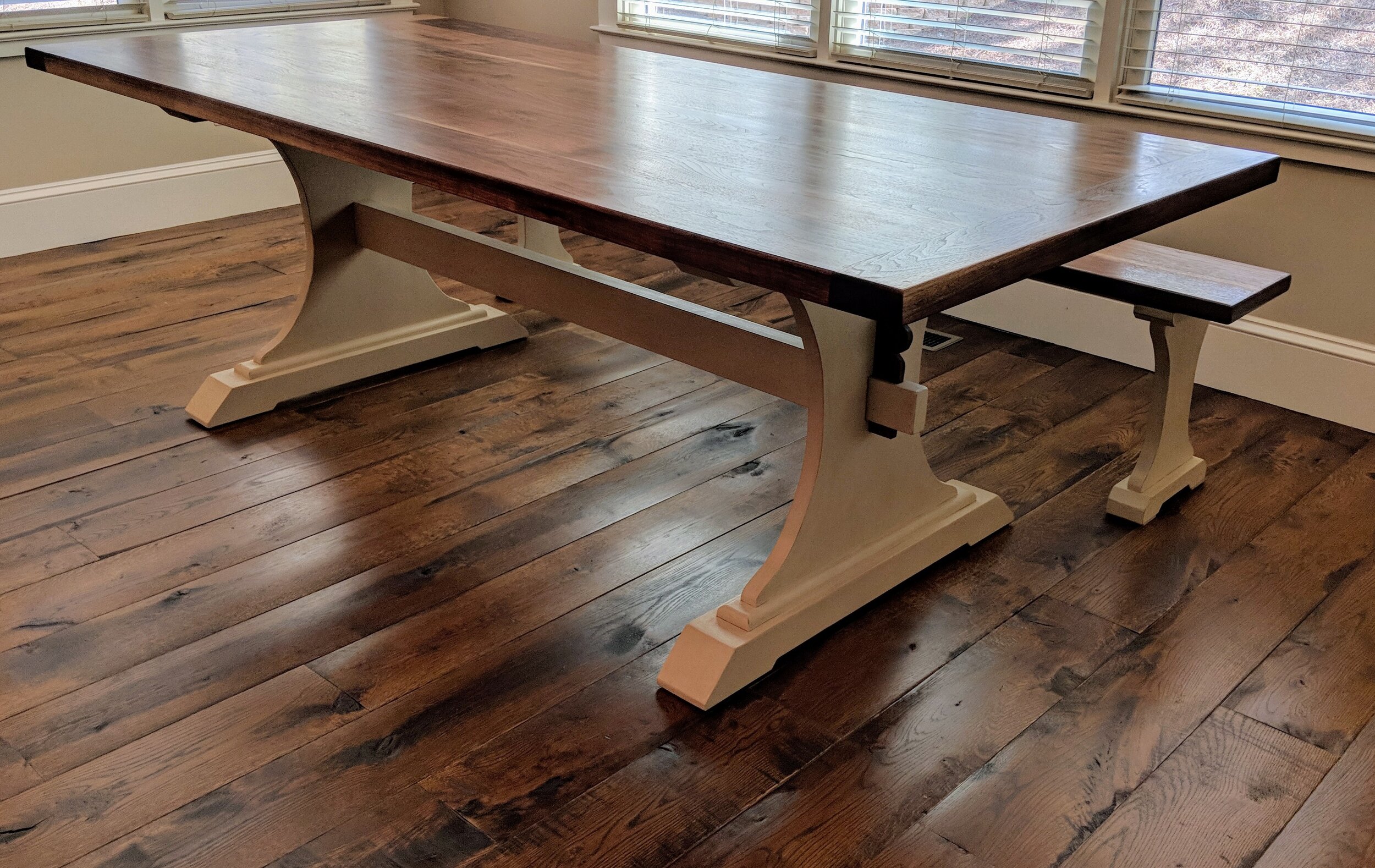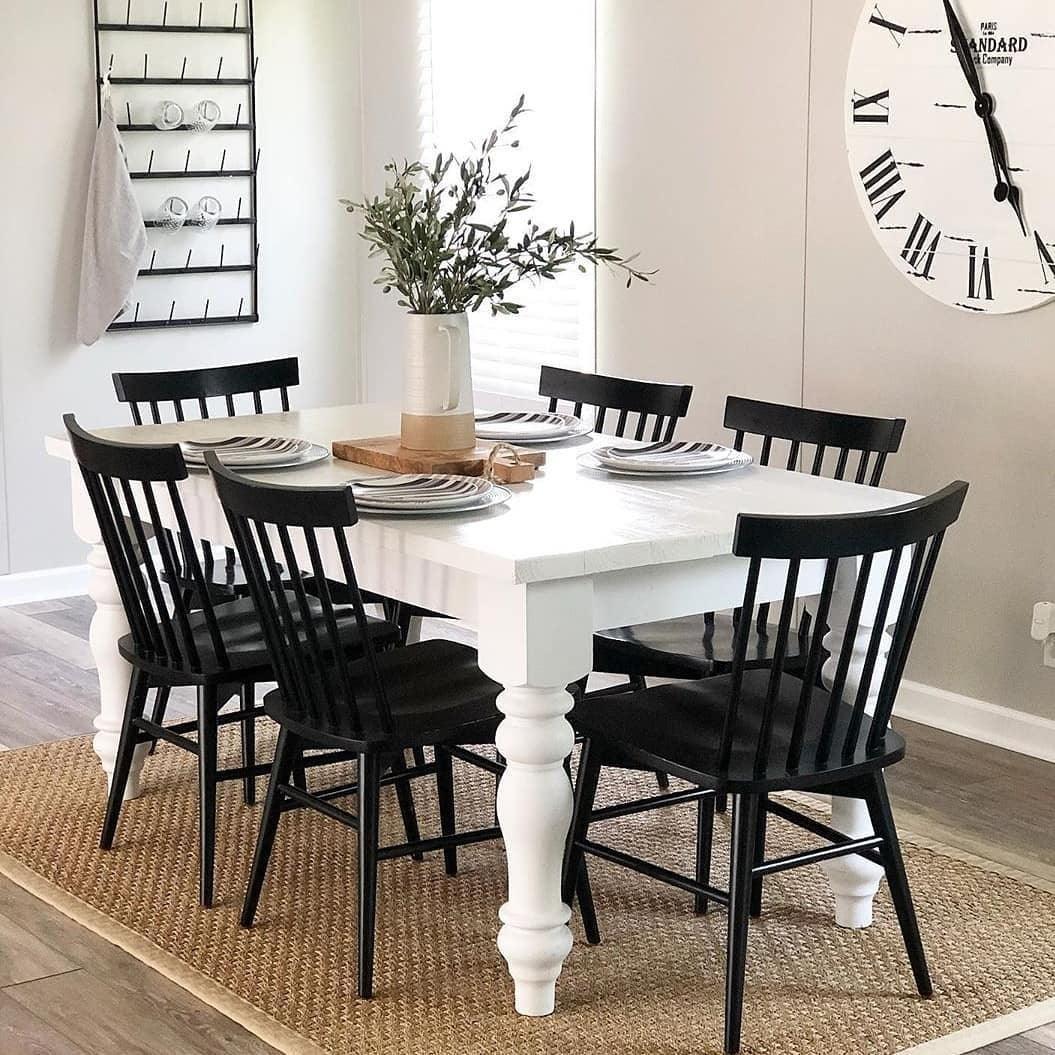Dining Room Table Legs: A Guide to Selecting the Right Style for Your Home
Dining Room Table Legs: A Guide to Selecting the Right Style for Your Home
Blog Article
From Conventional to Modern: Find the Suitable Eating Room Table Legs for Your Style
While classic layouts such as cabriole and turned legs evoke a feeling of timeless class, contemporary designs like hairpin and geometric options present a chance for striking aesthetic passion. As you think about these elements, the question stays: exactly how can you perfectly integrate these varied leg designs to develop a harmonious dining experience?
Comprehending Table Leg Styles
The range of dining area table leg designs can considerably influence both the aesthetic appeals and performance of the area. Each leg style contributes unique sensible attributes and visual components, dealing with diverse design choices and use needs. Understanding these styles is critical for picking the appropriate eating table that straightens with your general interior design vision.
For instance, conical legs use a tidy, traditional appearance that can boost an area's style, while pedestal bases provide stability and maximize legroom, making them optimal for smaller spaces. Barrette legs, a characteristic of mid-century modern design, present a commercial panache, permitting a ventilated, open feeling. Trestle legs evoke rustic charm, supplying robust support and a feeling of timelessness.
Moreover, the option of materials plays a significant function. Wooden legs can bring heat and texture, whereas metal alternatives typically share a streamlined, modern vibe. Eventually, recognizing table leg designs is essential for developing a natural eating area that mirrors individual design while making sure functionality and comfort. By thoughtfully thinking about these elements, you can boost both the aesthetic and useful charm of your eating space.
Conventional Table Leg Options
When picking eating area table legs, traditional choices usually symbolize classic elegance and craftsmanship. These designs mirror a rich heritage and a commitment to top quality, making them excellent for those who appreciate classic looks.
One of one of the most iconic typical leg styles is the cabriole leg, defined by its stylish curved shape. This layout typically includes attractive makings and is most commonly discovered in Queen Anne and Chippendale furniture. One more popular alternative is the turned leg, which boasts a collection of smooth, rounded shapes that give a classic look while preserving stability.
In addition, the straight leg, while simple, offers a tough and basic structure that can blend perfectly with a variety of tabletop styles. For those attracted to ornate outlining, claw-and-ball feet legs stimulate a feeling of magnificence and can act as a stunning centerpiece in any kind of dining room.
Finally, pedestal bases, although not purely legs, offer an alternate traditional alternative that allows for enough legroom and can be beautifully sculpted. Each of these typical leg designs adds to the overall setting of an eating room, weding function with visual appeal.

Modern Table Leg Styles
Modern table leg styles offer a varied variety of designs that stress ingenious materials and clean lines. These styles frequently focus on functionality while functioning as striking prime focus within an eating room. Minimalist visual appeals are widespread, with legs crafted from materials such as metal, glass, and engineered wood, which add to a ventilated and contemporary feel.
One preferred design is the hairpin leg, characterized by its slim, tapered structure that provides stability without overwhelming the tabletop (dining room table legs). This design is typically found in mid-century modern-day furniture and can effortlessly enhance various eating table shapes. An additional trend is the use of geometric forms, where legs may take on unbalanced or angular forms, including aesthetic passion and a touch of creativity

Blending Designs for One-of-a-kind Areas
Usually, home owners look for to develop unique dining spaces that mirror their individual style by mixing different layout elements. This method allows for the consolidation of diverse visual appeals, leading to a harmonious yet unique setting. Matching a rustic wooden table with smooth, contemporary metal legs can create a captivating contrast that elevates the room's overall charm.
In addition, integrating vintage table legs with modern tabletops can stimulate a feeling of background while maintaining a modern-day sensibility. Such combinations not just showcase private preference but likewise urge creative thinking, allowing home owners to curate a more tips here room that really feels both individual and welcoming.
Color plays a crucial duty in this blending process; choosing table legs that match or contrast with the existing color scheme can boost visual rate of interest. For instance, whitewashed legs can soften the boldness of a dark table surface, creating a well balanced visual.
Tips for Picking the Right Legs
Selecting the right table legs is important for achieving both functionality and aesthetic appeal in your dining space. Begin by considering the overall style of Recommended Reading your area. Standard settings gain from legs that feature complex makings or turned layouts, while contemporary areas may call for sleek, minimal styles.
Next, analyze the height and stability of the legs. dining room table legs. Conventional dining tables range between 28 to 30 inches in height, so ensure the legs match this measurement for comfort. In addition, robust materials, such as wood or metal, can boost stability and long life
Review the leg shape also-- options consist of directly, tapered, or stand designs. Straight legs offer a traditional appearance, while tapered legs can include a touch of beauty. Pedestal bases give enough legroom and are excellent for smaller spaces.
Verdict
In summary, choosing the perfect dining-room table legs calls for careful factor to consider of both modern-day and conventional styles. Traditional alternatives such as cabriole and turned legs supply timeless elegance, while modern-day styles like barrette and geometric forms provide a contemporary touch. By balancing leg design, elevation, and material with the overall decor, a natural and inviting ambience can be achieved. Inevitably, the picked table legs must reflect the wanted aesthetic, improving the eating experience within the room.
The selection of dining area table leg styles can dramatically influence both the appearances and capability of the room. Eventually, understanding table leg styles is important for producing a cohesive dining location that shows individual design while ensuring practicality and convenience.One of the most renowned typical leg styles is the cabriole leg, identified by its elegant rounded form. Straight legs use a timeless appearance, while conical legs can add a touch of style.In recap, choosing the suitable dining room table legs requires careful consideration of both modern-day and conventional designs.
Report this page